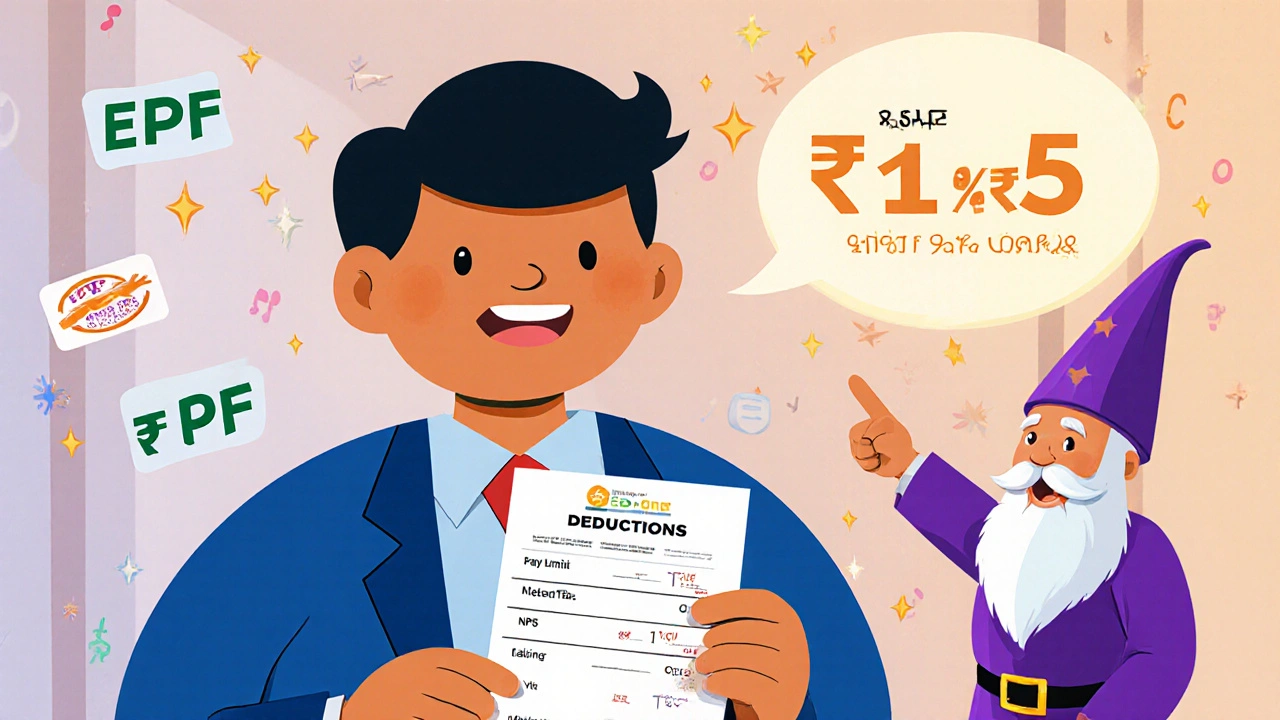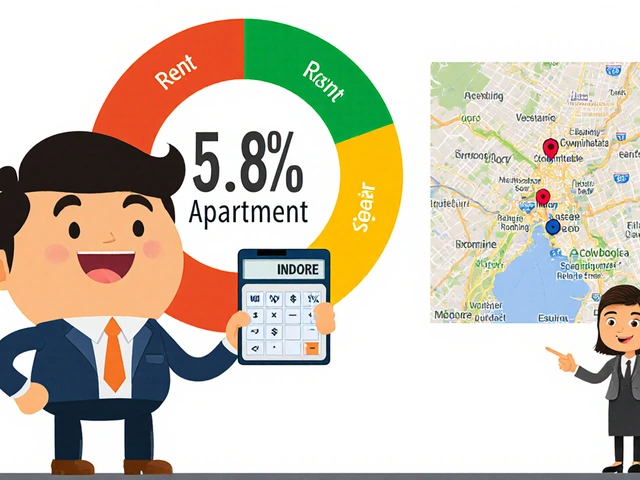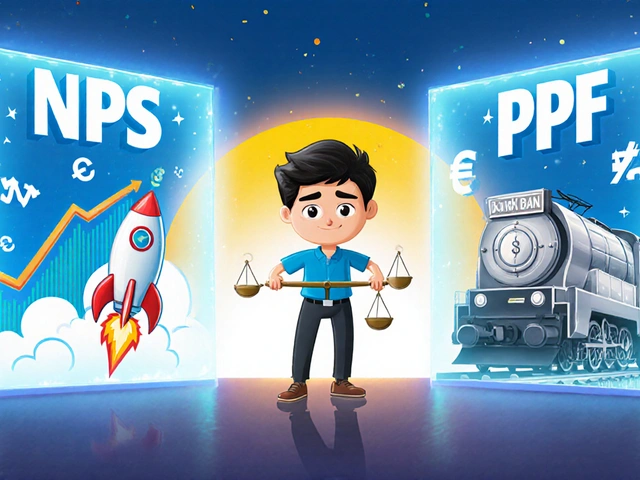Section 80C and Employer Investments in India: EPF, NPS, and Payroll Deductions Explained
If you’re working in India and getting your salary paid monthly, you’ve probably seen deductions labeled as EPF or NPS on your payslip. But do you know why they’re there-and how they help you save tax under Section 80C? Many employees assume these are just mandatory deductions, but they’re actually powerful tools to reduce your taxable income and build long-term wealth. This isn’t about fancy investments or risky stocks. It’s about the simple, government-backed systems your employer already uses to help you save money before you even see your paycheck.
What Section 80C Actually Does
Section 80C of the Income Tax Act lets you reduce your taxable income by up to ₹1.5 lakh per year. That’s not a tax credit. It’s a deduction-you subtract this amount from your total income before the tax department calculates how much you owe. If you earn ₹12 lakh a year and invest ₹1.5 lakh under 80C, you’re taxed as if you only made ₹10.5 lakh. That can mean thousands in tax savings.
The catch? The money has to go into approved instruments. The most common ones? Employee Provident Fund (EPF), National Pension System (NPS), life insurance premiums, tuition fees, and fixed deposits. But here’s the thing: if your employer is already deducting money from your salary for EPF or NPS, you’re already using Section 80C. You just might not realize it.
How EPF Works Under Section 80C
Every salaried employee in India contributes 12% of their basic salary to the Employee Provident Fund. Your employer matches that with another 12%. So if your basic salary is ₹50,000, you put in ₹6,000. Your employer adds ₹6,000. That’s ₹12,000 per month going into your EPF account.
Only your contribution-₹6,000/month or ₹72,000/year-is eligible for Section 80C. The employer’s part doesn’t count toward your deduction. But it still grows tax-free in your account. You can withdraw it tax-free after five years of continuous service. If you leave a job and don’t find another within two months, you can withdraw it early-but you’ll pay tax and penalties.
For most people, EPF is the biggest chunk of their 80C limit. If you’re earning a decent salary, your EPF alone might cover half your ₹1.5 lakh deduction. That means you don’t need to buy extra insurance or open a fixed deposit unless you want to.
NPS: The Hidden Tax Saver Most People Overlook
National Pension System (NPS) is different from EPF. It’s a voluntary retirement scheme, but many employers now offer it as an optional payroll deduction. If your company offers NPS, you can choose to contribute 10% of your basic + DA (dearness allowance) directly from your salary. That amount is also eligible for Section 80C.
Here’s where it gets better: you can claim an extra ₹50,000 deduction under Section 80CCD(1B), on top of your ₹1.5 lakh limit. So if you contribute ₹50,000 to NPS, you get ₹1.5 lakh under 80C + ₹50,000 under 80CCD(1B) = ₹2 lakh total deduction.
But there’s a trade-off. NPS money is locked in until age 60. At retirement, you must use 60% to buy an annuity (a monthly pension), and only 40% is tax-free lump sum. The annuity payments are taxable as income. So NPS isn’t for quick access. It’s for disciplined, long-term savers who want to reduce their tax bill now and guarantee income later.
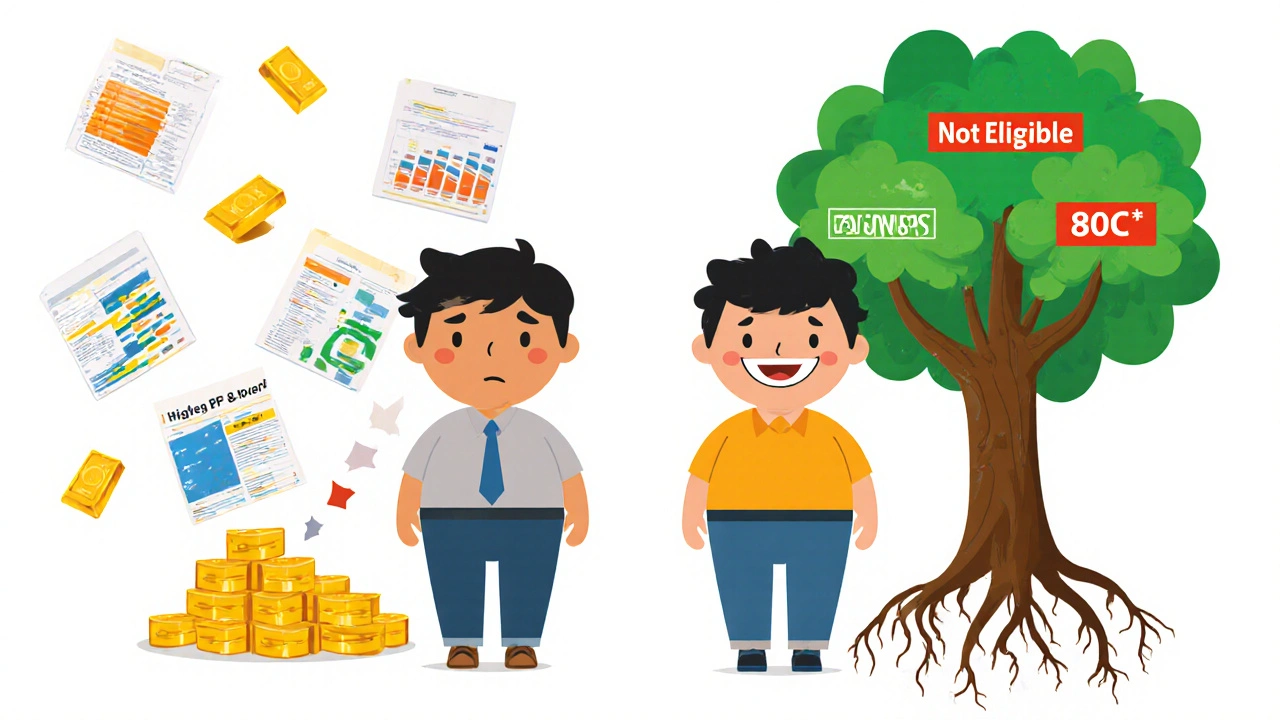
Payroll Deductions: The Easiest Way to Max Out 80C
Why do employers deduct EPF and NPS from your salary? Because it’s easier-for you and them. When money comes out of your paycheck automatically, you’re less likely to skip it. You don’t have to remember to pay it monthly. You don’t have to track receipts or file forms. It just happens.
Many companies now offer a choice in payroll deductions. You might see options like:
- EPF: 12% of basic salary (mandatory)
- NPS: 5%, 10%, or 15% of basic + DA (optional)
- Voluntary Provident Fund (VPF): extra contribution beyond 12%
VPF is your own money, above the mandatory 12%. It’s also eligible for 80C. If you’re already contributing 12% to EPF and want to use more of your ₹1.5 lakh limit, VPF is the easiest way. Just ask HR to increase your VPF deduction. No paperwork. No bank transfers. Just a form and a change in your payslip.
Most people never realize they can do this. They think their EPF is fixed. But it’s not. You can push more money into it-and get more tax savings.
What You Can’t Use Under Section 80C
Not every investment counts. A lot of people try to squeeze things like mutual funds, gold, or home loan principal into 80C-but only specific ones qualify. Here’s what doesn’t work:
- Equity Mutual Funds (SIPs in ELSS do qualify, but regular ones don’t)
- Physical gold or gold ETFs
- Recurring deposits (RDs)
- Fixed deposits with banks (only 5-year FDs qualify)
- Home loan interest (only the principal part under 80C, not the interest)
Also, don’t confuse Section 80C with other deductions. Section 80D is for health insurance. Section 80TTA is for interest on savings accounts. They’re separate. Your ₹1.5 lakh limit under 80C is only for the instruments listed in the Income Tax Act. Stick to EPF, NPS, VPF, life insurance, tuition fees, and 5-year FDs to stay safe.
Real Example: How Much You Can Save
Let’s say you earn ₹15 lakh per year. Your basic salary is ₹8 lakh. You contribute 12% to EPF: ₹96,000/year. You also opt for 10% NPS: ₹80,000/year. Total 80C investment: ₹1.76 lakh.
You can only claim ₹1.5 lakh under 80C. So you’ll use ₹96,000 from EPF and ₹54,000 from NPS. The remaining ₹26,000 in NPS doesn’t count toward 80C-but it does count toward the extra ₹50,000 under 80CCD(1B). So your total tax deduction becomes ₹2 lakh.
At a 30% tax rate, that’s ₹60,000 in tax saved. You didn’t do anything special. You just used the payroll system your employer already gave you.
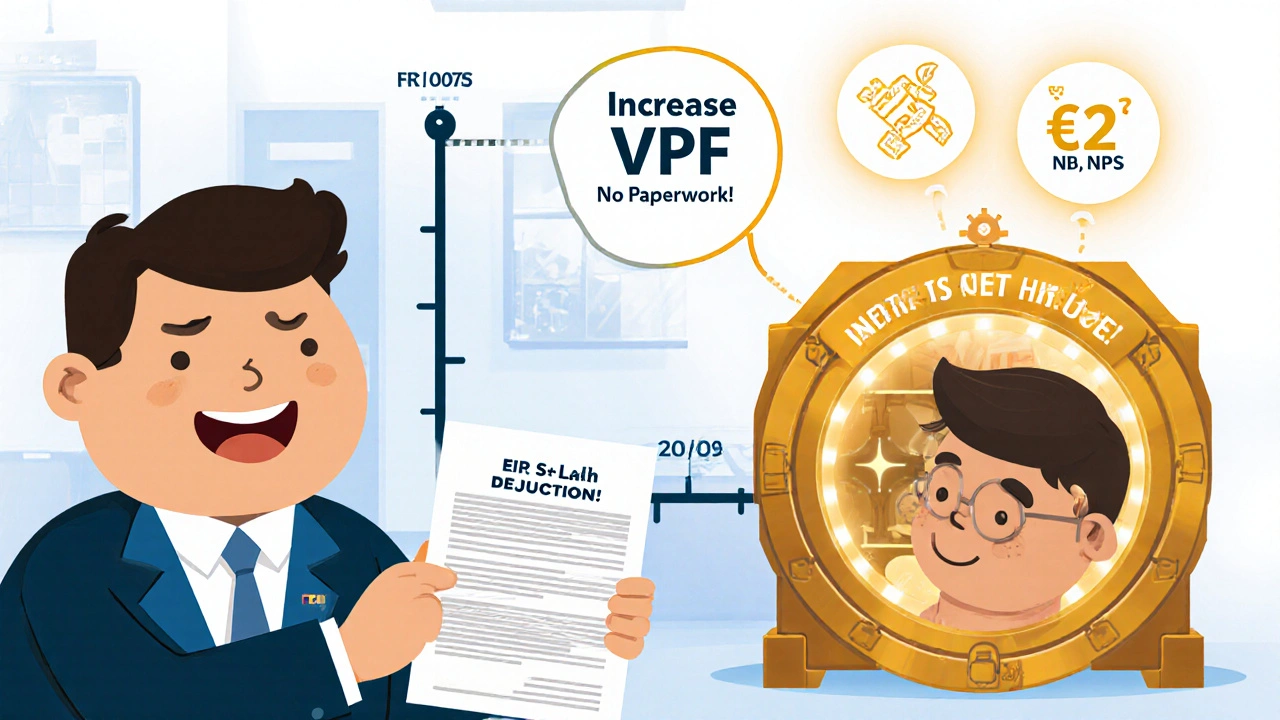
What to Do Next
If you’re not using your full ₹1.5 lakh under Section 80C, you’re leaving money on the table. Here’s how to fix it:
- Check your payslip. How much is going to EPF? How much to NPS or VPF?
- Add them up. If it’s less than ₹1.5 lakh, you can increase your VPF or NPS contribution.
- Ask HR for a form to increase your VPF or NPS deduction. Most companies have it ready.
- Don’t wait until March. Spread your contributions evenly across the year. It’s easier on your cash flow.
- Keep a record. Even though payroll deductions are tracked, save your payslips or download your EPF/NPS statements.
There’s no penalty for investing more than ₹1.5 lakh. You just won’t get extra tax benefit. But the money still grows. EPF gives you 8.25% interest. NPS gives you market-linked returns, often 9-11%. Both are better than a savings account.
Common Mistakes to Avoid
Even smart people mess this up. Here are the top errors:
- Thinking your employer’s EPF contribution counts toward 80C. It doesn’t. Only your part does.
- Not knowing about the extra ₹50,000 under NPS. That’s free tax savings.
- Waiting until December to invest. Payroll deductions are automatic. You can’t adjust them last minute.
- Confusing NPS with pension plans from private insurers. Only government-backed NPS qualifies.
- Ignoring VPF. It’s the simplest way to fill your 80C gap.
Also, don’t assume your company is helping you optimize. Most HR departments just follow rules. They won’t tell you about VPF or NPS unless you ask.
Is EPF mandatory for all employees in India?
Yes, EPF is mandatory for employees earning up to ₹15,000 basic salary per month. For those earning more, it’s optional unless the employer chooses to enroll them. But most companies enroll everyone, regardless of salary, because it’s part of standard payroll practice.
Can I claim both EPF and NPS under Section 80C?
Yes. Your EPF contribution (your portion) and your NPS contribution both count toward the ₹1.5 lakh limit under Section 80C. Plus, you can claim an extra ₹50,000 under Section 80CCD(1B) for NPS only, making your total tax deduction up to ₹2 lakh per year.
What happens if I change jobs? Do I lose my EPF or NPS?
No. Your EPF account stays active. You can transfer it to your new employer’s EPF account using your UAN (Universal Account Number). NPS accounts are also portable-you can continue contributing under the same PRAN (Permanent Retirement Account Number). Both systems are designed to move with you.
Can I invest in NPS if I’m self-employed?
Yes. NPS is open to all Indian citizens between 18 and 70 years old, whether employed, self-employed, or unemployed. You can open a personal NPS account and contribute directly. The same tax rules apply: ₹1.5 lakh under 80C + ₹50,000 under 80CCD(1B).
Is the interest on EPF taxable?
No. EPF interest is completely tax-free, both during accumulation and at withdrawal, as long as you’ve been contributing for at least five years. If you withdraw before five years, the interest becomes taxable. But if you transfer your EPF balance to a new employer, the five-year clock continues.
Final Thought: Your Paycheck Is Your Best Tax Tool
You don’t need to hunt for complex tax schemes. The system is already built into your salary. EPF and NPS aren’t just retirement plans-they’re your most reliable, zero-effort way to cut your tax bill. Most people pay more tax than they need to because they don’t know how to use what’s already there.
Check your payslip. Talk to HR. Increase your VPF or NPS deduction. That’s it. You’ve just saved thousands. And you didn’t have to do anything complicated.
